- Home
- Thomas Hardy
Tess of the D'Urbervilles
Tess of the D'Urbervilles Read online
Table of Contents
Title Page
Copyright Page
Introduction
PHASE THE FIRST - The Maiden
PHASE THE SECOND - Maiden No More
PHASE THE THIRD - The Rally
PHASE THE FOURTH - The Consequence
PHASE THE FIFTH - The Woman Pays
PHASE THE SIXTH - The Convert
PHASE THE SEVENTH - Fulfilment
SELECTED BIBLIOGRAPHY
READ THE TOP 20 SIGNET CLASSICS
Born on Egdon Heath, made famous in his novels, Thomas Hardy (184-1928) worked as an architect for several years. But poetry, which he wrote in his spare time, would prove his first and last literary love. By 1874, he was convinced that he could earn his living as an author and retired from architecture, married, and devoted himself to writing. An extremely prolific novelist, Hardy produced an important book every year or two. In 1896, disturbed by the public outcry over taboo subjects broached in two of his greatest novels, Tess of the D‘Urbervilles and Jude the Obscure, he announced that he would write only poetry. In later years, he was bestowed many honors and, upon his death, was buried with much ceremony in Poet’s Corner, Westminster Abbey.
Marcelle Clements is a novelist and journalist who has contributed articles on culture, the arts, and politics to many national publications. She is the author of two books of nonfiction, The Dog Is Us and The Improvised Woman, and the novels Rock Me and Midsummer. She teaches Proust’s In Search of Lost Time at New York University.
SIGNET CLASSICS
Published by New American Library, a division of
Penguin Group (USA) Inc., 375 Hudson Street,
New York, New York 10014, USA
Penguin Group (Canada), 90 Eglinton Avenue East, Suite 700, Toronto,
Ontario M4P 2Y3, Canada (a division of Pearson Penguin Canada Inc.)
Penguin Books Ltd., 80 Strand, London WC2R ORL, England
Penguin Ireland, 25 St. Stephen’s Green, Dublin 2,
Ireland (a division of Penguin Books Ltd.)
Penguin Group (Australia), 250 Camberwell Road, Camberwell, Victoria 3124,
Australia (a division of Pearson Australia Group Pty. Ltd.)
Penguin Books India Pvt. Ltd., 11 Community Centre, Panchsheel Park,
New Delhi - 110 017, India
Penguin Group (NZ), cnr Airborne and Rosedale Roads, Albany,
Auckland 1310, New Zealand (a division of Pearson New Zealand Ltd.)
Penguin Books (South Africa) (Pty.) Ltd., 24 Sturdee Avenue,
Rosebank, Johannesburg 2196, South Africa
Penguin Books Ltd., Registered Offices: 80 Strand, London WC2R ORL, England
Published by Signet Classics, an imprint of New American Library, a division of Penguin Group (USA) Inc.
First Signet Classics Printing, February 1964
First Signet Classics Printing (Clements Introduction), September 2006
Introduction copyright © Marcelle Clements, 2006
eISBN : 978-1-101-14183-0
All rights reserved
REGISTERED TRADEMARK-MARCA REGISTRADA
The scanning, uploading, and distribution of this book via the Internet or via any other means without the permission of the publisher is illegal and punishable by law. Please purchase only authorized electronic editions, and do not participate in or encourage electronic piracy of copyrighted materials. Your support of the author’s rights is appreciated.
http://us.penguingroup.com
INTRODUCTION
For readers who are smitten by nineteenth-century literature (and we are legion), Thomas Hardy’s fiction is blissful. Tess of the D‘Urbervilles: A Pure Woman, especially, is one of those books that makes you fall in love with reading and with novels, so deeply in love that you have no plan to recover, just as Tess herself remains steadfast in the reader’s memory. “Like the greatest characters in literature,” writes Irving Howe, “Tess lives beyond the final pages of the book as a permanent citizen of the imagination.” Hardy’s most alluring, tragic creation, she seems to dance into our sight line when we first meet her in the novel as a virginal child-woman, one of many in a May Day procession.
The banded ones were all dressed in white gowns—a gay survival from Old Style days, when cheerfulness and May-time were synonyms—days before the habit of taking long views had reduced emotions to a monotonous average.... Ideal and real clashed slightly as the sun lit up their figures against the green hedges and creeper-laced house-fronts; for, though the whole troop wore white garments, no two whites were alike among them. Some approached pure blanching; some had a bluish pallor; some worn by the older characters (which had possibly lain by folded for many a year) inclined to a cadaverous tint, and to a Georgian style.
... [Tess] was a fine and handsome girl—not handsomer than some others, possibly—but her mobile peony mouth and large innocent eyes added eloquence to colour and shape. She wore a red ribbon in her hair, and was the only one of the white company who could boast of such a pronounced adornment.
Indeed, the color red will often recur in Tess’s most intensely lived moments and it is hard to think of her otherwise than adorned by it. “Tess Durbeyfield at this time of her life was a mere vessel of emotion untinctured by experience,” Hardy tells us. She will become bitterly experienced, but not less passionate. The red ribbon foreshadows the “dull crimson fire” that will flush her face when she is angry, the “scarlet oozing” of wounds, the color of pain, of regret, the dull ache of modernism.“
Hardy’s thirteenth novel, Tess of the D‘Urbervilles is a melodrama in the hands of a master, replete with both emotion and intelligence, quasi-operatic in its use of the characters’ suffering, but also suffused with Hardy’s longing for disappearing rural England, especially his own Dorset, “this fertile and sheltered tract of country, in which the fields are never brown and the springs never dry.” The pleasure that Tess of the D’Urbervilles, first serialized in the summer of 1891, provides its readers has not only survived the ferocious attacks of critics and moralists who decried the “sordid” tale and its stylistic “folderol,” but also withstood the explorations of innumerable scholars and theorists in the last hundred years, maintaining its literary freshness, its aura of transcendent beauty and its richness of character, language, voice, images and vision.
Its story line both exemplifies and defies conventions of Victorian country life in the mid-nineteenth century. Teresa Durbeyfield is fresh, pretty and innocent, the eldest of five children in a family of poor farmers in Marlott, a village that “lay amid the north-eastern undulations of the beautiful Vale of Blakemore, or Blackmoor ... , an engirdled and secluded region, for the most part untrodden as yet by tourist or landscape-painter, though within a four hours’ journey from London.” She encounters a wealthy bounder and following either a seduction or a rape, depending on your interpretation, becomes pregnant. She refuses to accept support from him and returns to her family. When her baby dies, she leaves home again and goes to work in a dairy farm. There she reencounters the ardent and idealistic Angel Clare, youngest son of a parson, once glimpsed at the May dance. They fall in love and marry. The denouement of Tess’s story is well known, but I will not repeat it here, for this is one of those novels that can be read for plot.
A great part of the pleasure of Tess of the D‘Urbervilles is that it so often surprises us, beginning on page one, when John Durbeyfield, Tess’s father, turns out not to be the brutal, drunken peasant of convention but, in addition, a descendant of the d’Urbervilles, a noble Norman family who came to England eight centuries previously with William the Conqueror. Tess’s mother has heard of a Mrs. d‘Urberville, who lives some distance away and, on the assumption she may tur
n out to be a useful rich relation, compels Tess to travel there. As it happens, this nouveau riche family’s real name is Stoke, and Mrs. d’Urberville’s name was purchased. The bounder, Alexander d‘Urberville, is her son.
But he isn’t a perfect bounder, just as Tess is not a perfect victim. Indeed, it turns out she is no plain farm girl: a good student, she managed to get to the sixth form, and when the story opens, she is a schoolteacher. So she is in fact relatively educated and of noble birth. The evocation of the Norman Conquest is one of Tess of the D‘Urbervilles many masterly thematic grace notes. To this day, 1066 and the Battle of Hastings remain highly resonant in English history. The Norman invaders were mercilessly ambitious, and within a generation, England had been brought into the feudal system. The English landscape was dotted with a thousand castles, but its primitive Anglo-Saxon life was forever ended. Hardy reminds us of Tess’s lineage only now and then in some of the most vivid images of the novel. At one point, for instance, Alec taunts Tess, who has been working in the field, by attacking the missing Angel Clare:Her face had been rising to a dull crimson fire while he spoke; but she did not answer.
“You have been the cause of my backsliding,” he continued, stretching his arm towards her waist; “you should be willing to share it, and leave that mule you call husband for ever.”
One of her leather gloves, which she had taken off to eat her skimmer-cake, lay in her lap, and without the slightest warning she passionately swung the glove by the gauntlet directly in his face. It was heavy and thick as a warrior‘s, and it struck him flat on the mouth. Fancy might have regarded the act as the recrudescence of a trick in which her armed progenitors were not unpractised. Alec fiercely started up from his reclining position. A scarlet oozing appeared where her blow had alighted, and in a moment the blood began dropping from his mouth upon the straw. But he soon controlled himself, calmly drew his handkerchief from his pocket, and mopped his bleeding lips.
She too had sprung up, but she sank down again. “Now, punish me!” she said, turning up her eyes to him with the hopeless defiance of the sparrow’s gaze before its captor twists its neck. “Whip me, crush me; you need not mind those people under the rick! I shall not cry out. Once victim, always victim—that’s the law!”
Ah. But what sort of a victim can articulate that law? Not Clarissa, a perfect innocent, ravished a hundred years earlier in Richardson’s novel, where the law was first expressed by the author, nor Hawthorne’s Hester Prynne, who mutely wore her scarlet letter. Whereas Tess talks, questions, thinks, rethinks, acts, is passive, and starts all over again. She is object and subject. She comes alive under the male gaze—Alec‘s, Angel’s and also, of course, Hardy’s—but she is also an actor in her world, a progenitor of life and ideas, even if they must soon die. And neither her seducer nor her husband is rigid and fixed in any one male sensibility. Both Alec and Angel evolve according to mood, time and place and in response to Tess her- ‘ self. And nothing about Tess is ever static. Even our view of her noble ancestry is made to shift and reshift as her story progresses.
“Heaven, why did you give me a handle for despising you more by informing me of your descent!” Angel vehemently demands to know. “Here was I thinking you a new-sprung child of nature; there were you, the belated seedling of an effete aristocracy!” Alternately completing and shattering a classic triangle, Angel Clare will similarly defeat every prediction you may make about what could have been a quintessential nineteenth-century morality play—even a very good one—if it had been written by, say, Somerset Maughan or Stefan Zweig.
And, paradoxically perhaps, Tess is unforgettable in part because she is undefinable, even to her lovers. When Alec touches her briefly, that first night, as she is sitting on a pile of leaves, wearing a pale, puffy muslin gown, his fingers “sank into her as into down.”
Where did Tess come from? Some critics say that she owes a great deal to Richardson’s Clarissa or to Mrs. Gaskell’s Ruth. Others mention George Eliot’s early stories, describing rural life, or Nana, by the French naturalist Emile Zola, whom Hardy certainly admired. But while he read widely, his stated preferences in fiction turn out to be far more intriguing than these predictable predecessors would lead us to believe: “James is almost the only novelist I can read, & taken in small doses I like him exceedingly, being as he is a real man of letters,” he wrote to a friend. It’s difficult to imagine that there is such a thing as a small dose of Henry James but, in any event, The Portrait of a Lady’s Isabel Archer seems like a worthy addition to the unlikely group already formed by Clarissa, Ruth and Nana. And then you must add the Bible and, of course, Dar win, whom Hardy read and was stunned by when he was around twenty years old. There were his cherished Greeks plays, as well, whose influence is everywhere in this book. From the very start, Tess’s trajectory is that of a heroine whose tragedy is preordained.
“Did you say the stars were worlds, Tess,” her little brother, Abraham, asks her. It is night. They are sitting by the side of the road, near their dead horse and their useless cart, waiting for the mail-cart man to come back for them and give them a ride back into town. Tess answers her brother:
“Yes.”
“All like ours?”
“I don’t know, but I think so. They sometimes seem to be like the apples on our stubbard tree. Most of them splendid and sound—a few blighted.”
“Which do we live on—a splendid one or a blighted one?”
“A blighted one.”
Like the heroes of the Greek plays Hardy loved, Tess doesn’t succeed in escaping her destiny. Instead, when her struggles are to no avail, she watches her fate unfold and wonders at the ways of the world, which she has learned too late. “I shouldn’t mind learning why—why the sun do shine on the just and unjust alike.” We watch as she wonders and we cannot help ourselves if we feel hope on her behalf—more hope, no doubt, than she is capable of—but we know why Tess cannot escape. With the perspective of more than a hundred years, we can map the geology of the blighted star: the repercussions of the industrial revolution, the extinction of rural life, the implacable laws of caste, gender and morality in Victorian England.
So we can imagine what might happen to Tess, long before she does. And we know what must happen when she meets Alec d‘Urberville: “Alec looked at Tess as he spoke, in a way that made her blush a little. ’And so, my pretty girl, you’ve come on a friendly visit to us, as relations?‘ ”
But the switch is that the novel will not end when Tess gives birth to the fruit of her ignorance. Her destiny may already be settled, but her story is not. As Hardy puts it in his preface to the fifth and later editions: “This novel being one wherein the great campaign of the heroine begins after an event in her experience which has usually been treated as fatal to her part of protagonist, or at least as the virtual ending of her enterprises and hopes ...”
In fact our own emotional connection with Tess deepens with her supposed fall and we will remain attached to her long after “ ‘Justice’ was done, and the President of the Immortals, in Aeschylean phrase, had ended his sport with Tess. And the d’Urberville knights and dames slept on in their tombs unknowing.”
For Hardy, Tess represented a leap forward in his writing. He thought it his finest novel, and Tess was his favorite character. He had already published twelve books, starting with A Pair of Blue Eyes, which was serialized in the Cornhill Magazine (and much admired by the young Marcel Proust) and including Far from the Madding Crowd (1874), The Return of the Native (1878) and The Mayor of Casterbridge (1886). His reputation was formidable but it did not protect him against the puritanical sensibilities of the editors of Macmillan Magazine , who refused to serialize Tess of the D‘Urbervilles unless he removed passages deemed offensive. He returned his advance and took the manuscript elsewhere, but without success. He finally did dismantle the novel for serialization, removing the illegitimate child and, even more astoundingly, much of the substance of Tess’s relationships with both men who would be her lovers. He p
ublished the excised passages separately, referring to them in his preface to the first edition as having been “more especially addressed to adult readers.” He thanks his editors “for enabling me now to piece the trunks and limbs of the novel together and print it complete.”
Adult and complete with trunks and limbs, Tess was controversial among critics and in the literary establishment—for some because of its moral content, but for others because of what was thought to be its stylistic lapses. Even the “real man of letters,” Henry James, expressed mixed feelings, and thought Tess “chock-full of faults and falsities and yet [possessed of] a singular beauty and charm.” In private he was blunter, and in a letter to Robert Louis Stevenson, he said that Tess “is vile. The pretense of ‘sexuality’ is only equalled by the absence of it, and the abomination of the language by the author’s reputation for style.”
Undoubtedly, what was seen as “faults and falsities” were the contradictions, disjunctions and the ambiguity that would prove so attractive to the hundreds of psychoanalytic, cultural, feminist and literary theorists who have explored Tess of the d‘Urbervilles since its publication. The English theorist J. Hillis Miller calls Thomas Hardy’s “unmappable” and has written: “The topography of that mind cannot be charted.” The better one knows Tess, the more one comes to love its combination of passion and ambiguity, its cultural discontinuities, and the evidence of its author’s own complex emotions toward his characters, alternating respect, voyeurism, and an almost voluptuous compassion.
The early negative reaction left Hardy inconsolable, despite the groundswell of enthusiasm from other writers, which would continue to grow long after Tess’s publication. In Virginia Woolf’s opinion, “[it] is a vision of the world and of man’s lot as they revealed themselves to a powerful imagination, a profound and poetic genius.” D. H. Lawrence would say of Hardy that his “feeling, his instinct, his sensuous understanding is ... very great and deep, deeper than that, perhaps, of any other English novelist.”

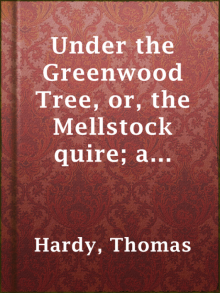 Under the Greenwood Tree; Or, The Mellstock Quire
Under the Greenwood Tree; Or, The Mellstock Quire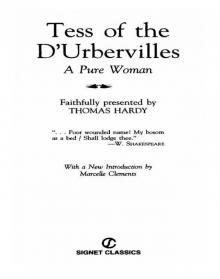 Tess of the D'Urbervilles
Tess of the D'Urbervilles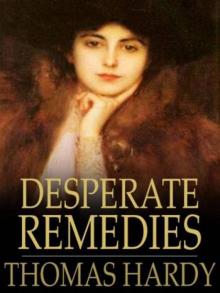 Desperate Remedies
Desperate Remedies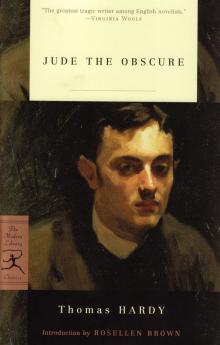 Jude the Obscure
Jude the Obscure Two on a Tower
Two on a Tower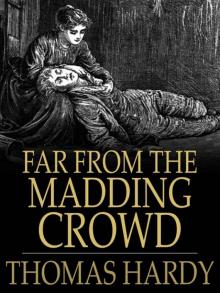 Far from the Madding Crowd
Far from the Madding Crowd The Return of the Native
The Return of the Native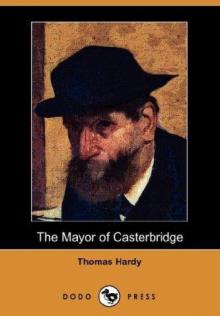 The Mayor of Casterbridge
The Mayor of Casterbridge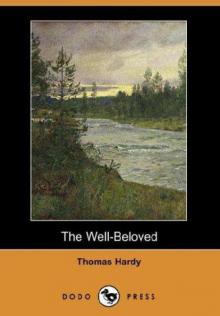 The Well-Beloved
The Well-Beloved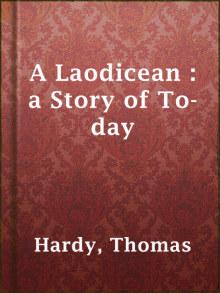 A Laodicean : A Story of To-day
A Laodicean : A Story of To-day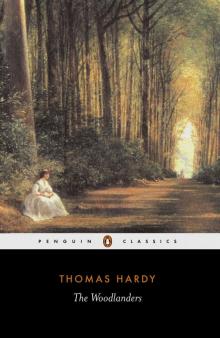 The Woodlanders
The Woodlanders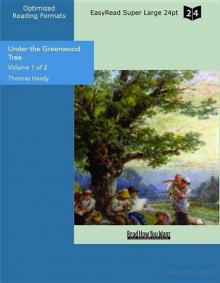 Under the Greenwood Tree
Under the Greenwood Tree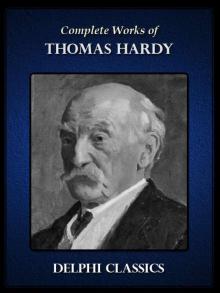 Complete Works of Thomas Hardy (Illustrated)
Complete Works of Thomas Hardy (Illustrated)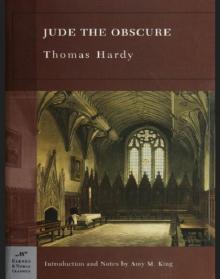 Jude the Obscure (Barnes & Noble Classics Series)
Jude the Obscure (Barnes & Noble Classics Series) The Distracted Preacher
The Distracted Preacher